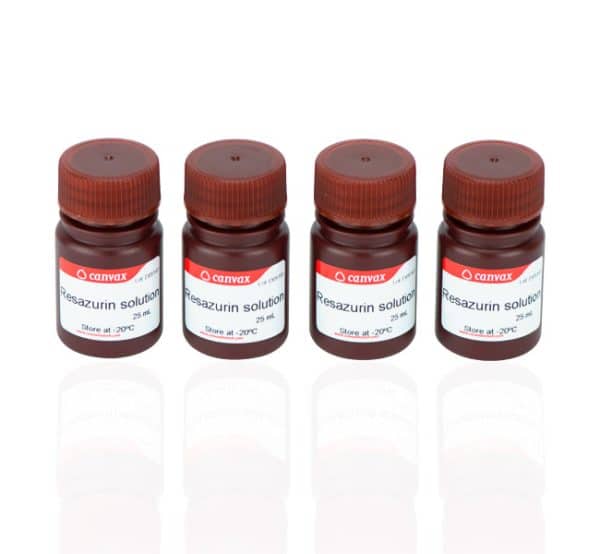Resazurin Cell Viability Assay
Référence CA035-S
Conditionnement : 2,500assays
Marque : Canvax Biotech

Resazurin Cell Viability Assay
For a Reliable, Sensitive & Easy-to-use Fluorescent Detection of Cellular Metabolic activity
Resazurin Cell Viability Assay is a reliable, sensitive and easy-to-use fluorescent assay that detects cellular metabolic activity. Resazurin (7-Hydroxy3H-phenoxazin-3-one 10-oxide) is a blue dye non-fluorescent until it is irreversibly reduced to the pink colored and highly red fluorescent resorufin by dehydrogenase enzymes in metabolically active cells.
The fluorescent signal is monitored using 530-560 nm excitation wavelength and 590 nm emission wavelength. The absorbance is monitored at 570 nm and 600 nm. The fluorescent or colorimetric signal generated from the assay is proportional to the number of living cells in the sample.
Detailed information:



